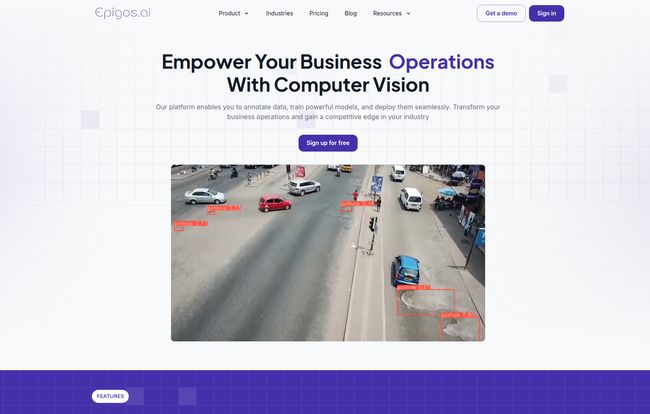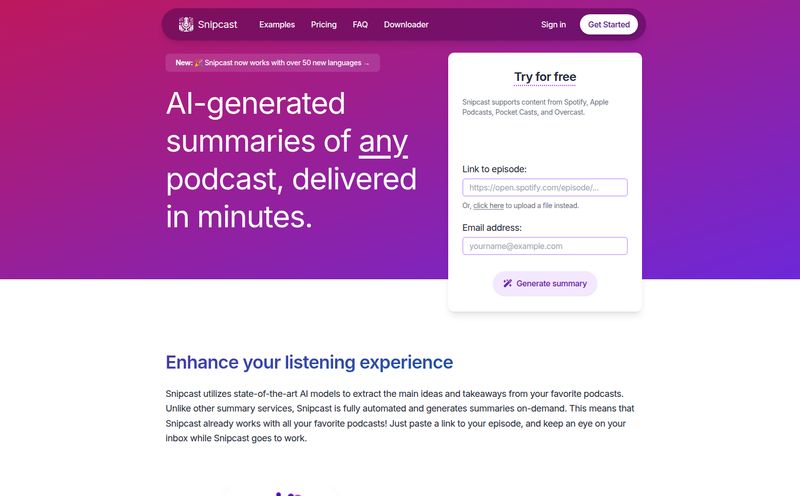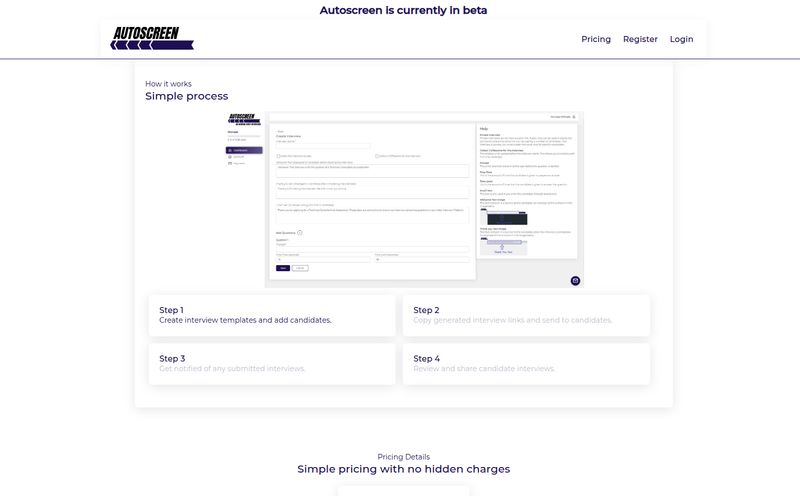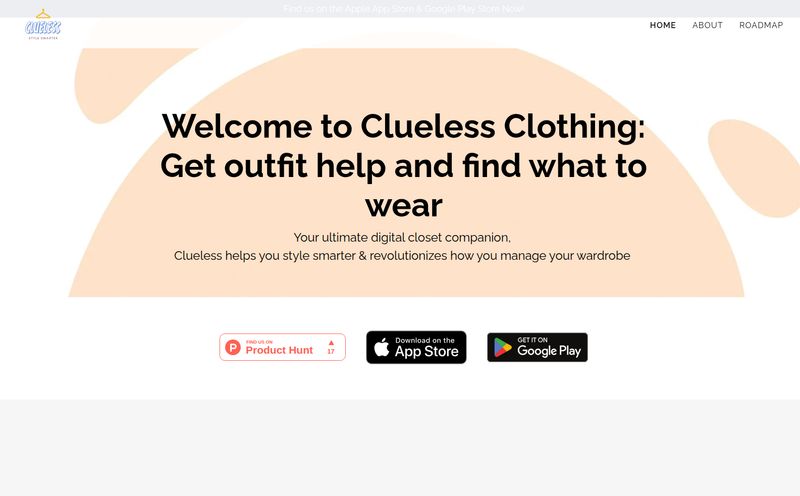If I see one more article about how AI is going to change everything, I might just unplug my router and go live in the woods. We're drowning in a sea of buzzwords, and for most business owners, it's just noise. But every now and then, a tool pops up that cuts through the chatter. A tool that isn't about some far-off sci-fi future, but about solving a real, tangible problem right now.
I've been in the SEO and digital strategy world for a long time, and I've seen countless platforms promise the world and deliver a postage stamp. Computer vision has always been one of those tantalizing but out-of-reach technologies. The idea of teaching a computer to see and understand images is incredible. The reality? It usually involves a team of expensive data scientists, mountains of code, and a budget that could fund a small nation.
But what if it didn't have to be that way? I recently stumbled across a platform called Epigos AI, and honestly, it got my attention. It claims to be a platform that lets regular businesses build and deploy custom computer vision models without needing a PhD in machine learning. A bold claim. So, I decided to take a look under the hood.
So, What Exactly Is Epigos AI?
Think of it like this: You know how Shopify or Squarespace made it possible for anyone to build a professional-looking website without knowing how to code? Epigos AI is trying to do the same thing for computer vision. It's an end-to-end platform designed to take you from a folder of messy images to a fully functional, deployed AI model that can analyze visual data.
It’s built for the teams that need the power of computer vision but don't have the in-house expertise to build it all from scratch. You bring the images and the problem you want to solve; Epigos provides the assembly line to build the solution.

Visit Epigos AI
A Closer Look at the Features (The Nuts and Bolts)
A platform is only as good as its tools. So, let’s walk through the workflow. It's a pretty logical progression from data to deployment, which I appreciate.
It All Starts with Your Data
Before you can do any fancy AI magic, you need to get your house in order. Epigos provides a Dataset management tool. This is the unglamorous but absolutely critical first step. It’s where you upload, organize, and version your images. Having this all in one place, rather than scattered across a dozen different cloud drives, is a bigger deal than it sounds.
The Tedious Task of Annotation, But... Easier?
Ah, annotation. Anyone who's ever had to manually draw bounding boxes around thousands of images knows the soul-crushing boredom involved. It's the part of the process where interns question their life choices. This is where Epigos starts to shine. It has a built-in Image annotation tool that looks clean and straightforward.
But the real star of the show is the Auto Label feature. The platform can take a stab at labeling your images for you, which you then just need to review and correct. This isn't just a time-saver; it’s a sanity-saver. It can turn a week-long task into an afternoon's work. That’s a massive win.
Training Your AI Model Without a Headache
Once your data is labeled, it's time for the main event: Model training. This is typically the part where you need to understand complex algorithms and configure servers. Epigos abstracts that all away. You basically tell it what you want it to learn from your annotated images, and it handles the heavy lifting on its infrastructure. You can monitor the process and see how well your model is performing without ever having to write a line of Python. It’s a true “press a button and wait” experience, which for many, is exactly what they need.
From Lab to Real World: The Final Hurdle
A trained model sitting on a server is useless. You need to put it to work. Model deployment is another huge roadblock for companies. Epigos seems to have this figured out, offering deployment options that make your model accessible via a simple API. This means your developers can easily integrate the model’s “eyes” into your existing applications, websites, or internal tools.
Don't Want to Do It Yourself? They've Got You.
I also spotted a Data labelling service. This is a smart move. It’s an admission that even with great tools, some companies are just too strapped for time. This service lets you outsource the entire annotation process to their team. It’s an escape hatch for when a deadline is looming and you just need the data done.
Who is This Really For? A Peek at Use Cases
This is all great in theory, but where does the rubber meet the road? The site showcases industries like:
- Agriculture: Imagine analyzing drone footage to spot crop disease or count plants.
- Manufacturing: Automated quality control. A model could spot defects on a production line far faster and more consistently than the human eye.
- Medical: Identifying anomalies in medical scans (though this would require immense validation and regulatory approval, of course).
- Retail: Analyzing shelf stock or foot traffic patterns in a store.
The applications are genuinely broad. If you have a business problem that involves visually identifying, counting, or checking something, this could be a fit.
Let's Talk Money: Epigos AI Pricing
Alright, the all-important question: what's this going to cost? The pricing structure is refreshingly transparent. I've broken it down into a simple table.
| Plan | Price | Who It's For | Key Limits |
|---|---|---|---|
| Free | $0 / month | Individuals, students, open-source projects. | 1 Project, 1,000 Images, 1 Model Training Credit |
| Starter | $150 / month | Small businesses starting to build. | 3 Projects, 10,000 Images, 20 Model Training Credits |
| Teams | $350 / month | Scaling teams with higher needs. | 10 Projects, 50,000 Images, 50 Model Training Credits |
The Free plan is genuinely useful for testing the platform. It's not a crippled demo; you can actually build something with it. The Starter plan feels like the sweet spot for a small business looking to implement its first real-world computer vision project. And the Teams plan is there for when you're ready to scale. They also mention custom plans for enterprise needs, which is standard.
The Good, The Bad, and The Realistic
No tool is perfect. After looking it all over, here's my take.
The biggest win here is speed and accessibility. It takes an incredibly complex field and makes it available to a much wider audience. For a business, this means potentially solving problems in weeks that would have taken months or years, if they were even possible at all. The time-to-value is its strongest selling point.
Now, its not all sunshine and rainbows. The main trade-off is control. By using a platform like Epigos, you are giving up granular control over the underlying algorithms and infrastructure. A high-end AI research team would probably scoff at this, as they want to fine-tune every little parameter. But let's be honest, 99% of businesses are not high-end AI research teams. The other factor is, naturally, the platform reliance. Your models and workflow live within their ecosystem. And as you scale, the cost of teh plans could become a significant operational expense to factor in.
Is Epigos AI Worth Your Time and Money?
So, do I recommend it? As with most things in tech and SEO, the answer is: it depends.
If you're a business that needs the results of computer vision—to automate a tedious visual task, to gather new data, to improve a process—and you don't want to hire an entire data science department, then yes. Epigos AI looks like a fantastic solution. It's a bridge across the chasm of complexity that separates most businesses from this powerful technology.
However, if you're a large corporation with an established machine learning team that thrives on building custom solutions from the ground up, this might feel too restrictive. They are two different philosophies. Epigos is for the pragmatists, not necessarily the purists.
Conclusion
For years, powerful tech like computer vision felt like it was locked away in an ivory tower, accessible only to a select few at places like Google or NVIDIA. Platforms like Epigos AI are picking the lock. They’re making sophisticated tools more democratic, and that’s an exciting trend. It shifts the focus from how to build the AI to what creative problems we can solve with it. And that’s a much more interesting conversation to have.
Frequently Asked Questions
Can I test Epigos AI before making a purchase?
Absolutely. They offer a generous Free plan that allows you to create a project, upload images, and even train a model. It's a great way to get a feel for the entire workflow before committing to a paid plan.
Is Epigos AI free to use?
Yes, there is a permanent Free tier that's suitable for personal projects, students, or just exploring the platform's capabilities. For commercial use and larger projects, you'll need to move to one of their paid plans.
Is my data secure on the Epigos platform?
Based on their website, they take data security seriously. For any business handling proprietary or sensitive visual data, this is a critical question. They have a dedicated page on their site for data security, and I'd recommend any potential user review their specific policies.
What kind of data can I process with Epigos?
Epigos is built for computer vision, so it's designed to process visual data—primarily images. You can use it for tasks like object detection (finding things in an image), image classification (categorizing an image), and segmentation (outlining specific objects).
What happens if I need more resources than the Teams plan offers?
The pricing page mentions that they can create custom solutions. If your needs for training, storage, or inference requests exceed the top-tier plan, you can contact their sales team to discuss a custom or enterprise-level package tailored to your specific requirements.



